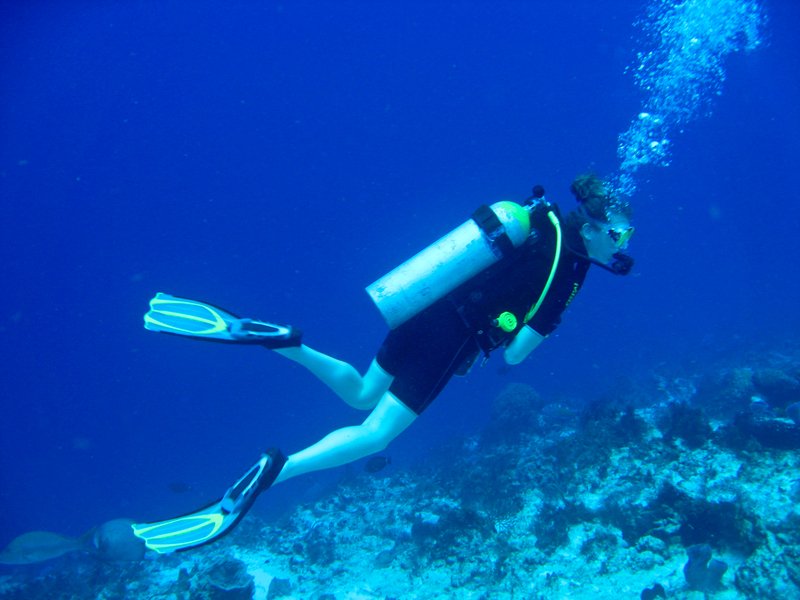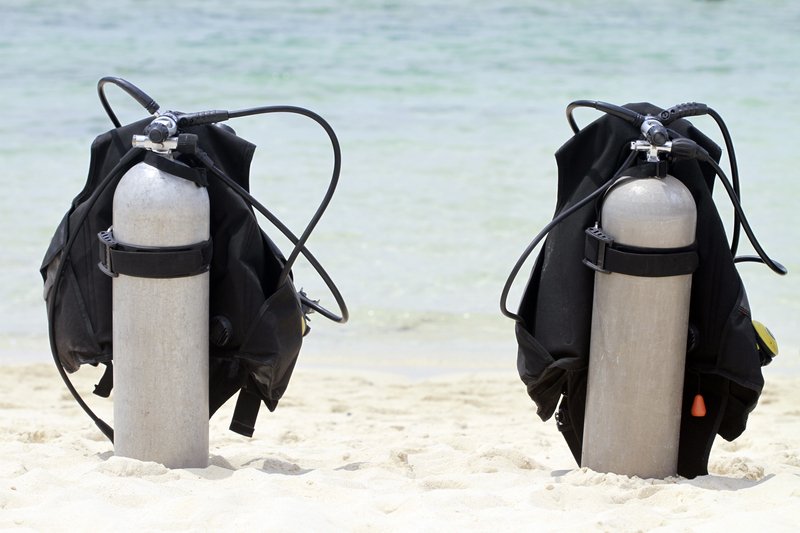Scuba diving is an exciting activity that many people enjoy. It can be a great way to explore the underwater world and see new things! However, there are some safety measures you need to take before going diving.
This post talks about some of the gear you need and how it can impact your dive. For instance, do you know why dry suits are necessary for certain dives? Keep reading to find out!
Dry or Wet Suit
One of the challenges beginners face is deciding between a dry suit or a wet suit. The main difference between the two is that dry suits are designed to keep your body completely dry, while wet suits help you stay warm but may still have some degree of water seepage.
Drysuits protect your body from both cold water and the pressure of deep diving. When scuba diving, there is always a chance that you could go deeper than expected or stay under longer than anticipated. This could result in hypothermia if your suit is not adequately prepared for the change in depth.

On the other hand, a wet suit helps keep you warm by trapping water inside its neoprene layers and allowing heat from your body to be transferred into this water. This is an excellent option for divers who are less likely to encounter cold underwater temperatures or go more profound than the typical recreational level – which hovers around 130 feet.
There’s no correct answer on which one you should wear when scuba diving because it depends on where exactly you’re diving. Therefore, ensure you pick the right gear depending on the water conditions.
Diving Mask and Snorkel
Since your eyes are not capable of seeing underwater, you need to wear a diving mask. The mask provides an air space in front of your face, thereby allowing you to see clearly underwater.
On the other hand, a snorkel enables you to breathe in the water. It’s a tube-shaped object you can use to breathe through your mouth or nose underwater without taking off the mask.
You should wear both snorkel and diving masks when scuba diving, but some divers choose not to do so if they’re going on short recreational dives where they don’t dive too deep. However, if you’re a beginner, it’s advisable to wear both masks and snorkels at all times.
Scuba Gloves
Another handy item you should wear when scuba diving is a pair of scuba gloves. It will help you get a firm grip on objects underwater and protect your hands from sharp surfaces, spiny creatures like urchins and corals, or even other divers who might bump into you.
Scuba Tank
A scuba tank is another necessary part of your scuba gear. In fact, it’s the most important piece because this is what supplies you with oxygen underwater. You’ll need to carry along two types of tanks: one that will supply air for use during buoyancy control and another as an emergency backup in case something goes wrong with the first one while diving.

Fins
Your scuba gear list isn’t complete without a pair of fins. Fins are what allow you to move through the water quickly and efficiently, allowing you to swim further with less energy than without them. Scuba divers use either one or two types of fin depending on their diving style:
- Full Foot “Twin Jet” Fin – these have a split toe which allows both feet equal propulsion. They’re also closed-heeled, meaning they fit around the foot and ankle.
- Open Heel Fin – these are open-toed fins that attach to your feet with straps. They give you reliable propulsion, but less than twin jet fins do.
Dive Computer
A dive computer monitors your dive data. The most basic function of any dive computer is to monitor the amount of time you spend underwater and how long it has been since your last breath, allowing you up to three minutes before having to take a fresh air reserve or ascend.
It also measures depth, water temperature, and ambient pressure, thereby allowing the computer to adjust for depth changes and warn you when it’s time to make your ascent.
Submersible Pressure Gauge (SPG), Compass, and Depth Gauge
An SPG is a vital piece of equipment that measures the total pressure in your tank and shows you how much air remains. In addition, an essential depth gauge gives you a readout for what depth you are currently at, as well as recording your maximum depth.
The compass helps guide your direction underwater without having to pull out an additional tool or rely on overhead landmarks such as trees.
Regulator
A regulator is a scuba diver’s lifeline. Without it, you would simply exhale all of the air in your lungs when descending and drown before reaching the surface. Instead, this handy device allows you to breathe underwater.
Average Scuba Diving Costs
Once you have your diving gear in hand, it’s time to get out into the water and take it for a spin. Unfortunately, scuba diving can be pretty expensive. On average, it costs:
- In California: About $100 to $150 for a one-tank dive. For a two-tank dive, you can expect to pay anywhere between $200 and $250. Additional costs apply if you want private diving.
- In Hawaii: About $130 per person for first-timers, $114 to $185 per person for a two-tank dive, and $150 to $170 per person for a three-tank dive.
- In Florida: $50 to $80 for a one-tank drive and $65 to $90 for a two-tank dive.
- In South Carolina: Most dives are two-tank dives in South Carolina, and they cost about $80 to $120 per person.
Most Popular Scuba Diving Locations
If you have your heart set on traveling somewhere exotic or perhaps even out of this world to enjoy exhilarating scuba diving experiences, then head straight to:
- Barracuda Point, Malaysia
- The Yongala, Australia
- Manta Ray Night Dive, Kailua Kona, Hawaii
- Great Blue Hole, Belize
- Navy Pier, Western Australia
Wrapping Up
Scuba diving is, without a doubt, one of the most exhilarating and fun activities to enjoy. Whether you’re a beginner or an experienced diver, there are lots of beautiful places on this planet that allow people from all walks of life to come together for this great activity!
But to make the most out of this experience, you need to arm yourself with the right gear for safety and comfort. Hopefully, thanks to the tips we shared in this article, you know what to purchase.
While you are here, I think we might interest you with these:
5 Great Places for Fishing in Brazil – if you are a fan of fishing, there are tons of places in Brazil in which you could see some fantastic aquatic species! Click here and find out five great places to go fishing in the country!
12 Small Amazing Cities to Visit in Brazil – Brazil has a few amazing small cities that will surely charm you to the point you’ll want to come back ASAP! Please take a look at our top 12 list of amazing cities to visit in Brazil!
9 Reasons Why You Should Include Paraty in Your Itinerary – If you have never heard of Paraty before, we got nine great reasons why you should visit in your next trip to Brazil!
Cover Photo: scuba diver and fish at Ceará, Brazil – Credit: ID 152354976 © Carlo Leopoldo Bezerra Francini | Dreamstime.com
